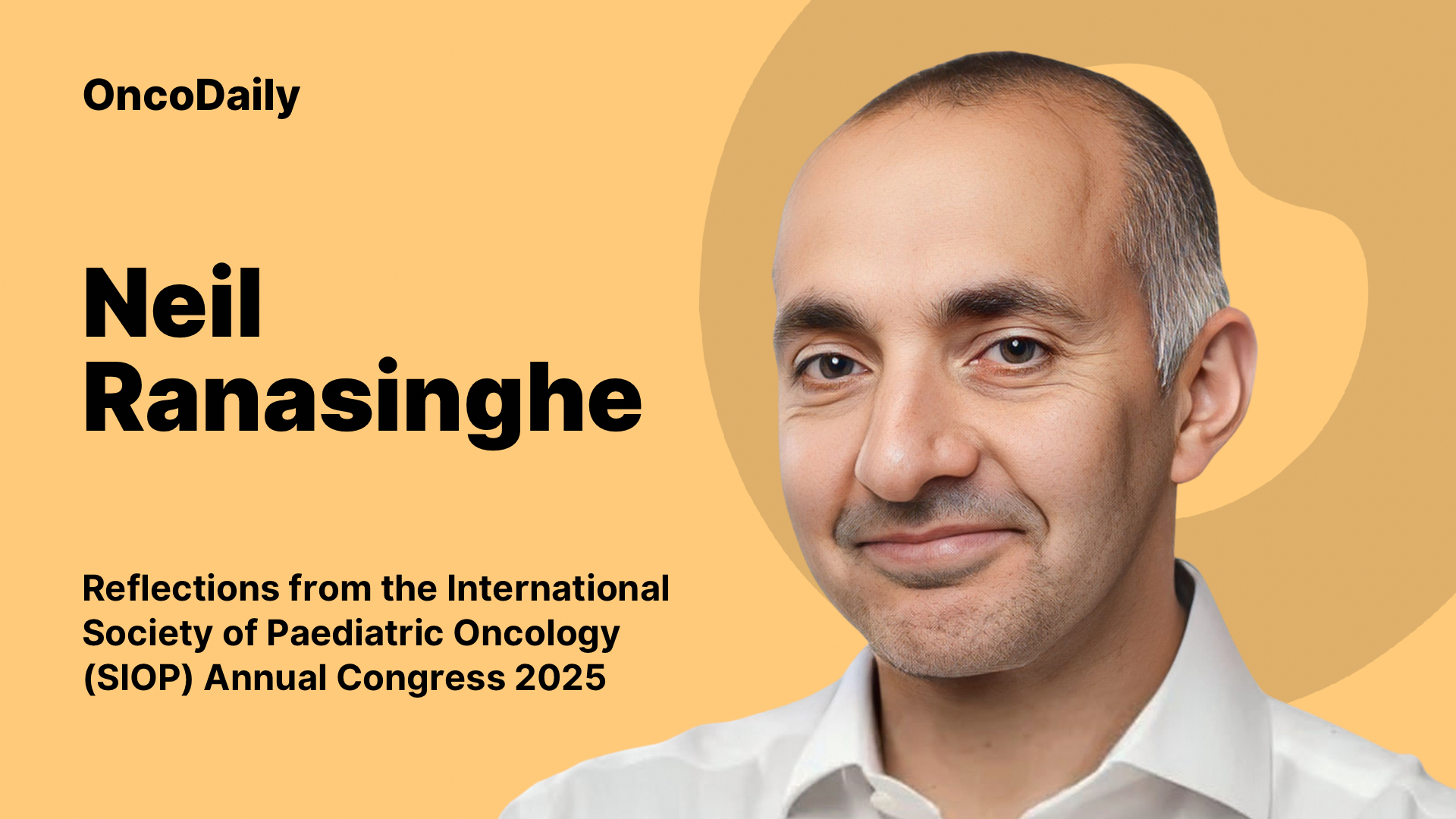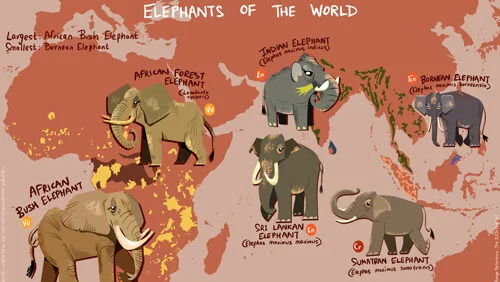I recently travelled to Amsterdam for the 2025 annual International Society of Paediatric Oncology (SIOP) Congress. I was attending as a patient advocate and for my voluntary work for the SIOP Global Mapping Programme. The meeting is an annual gathering of clinicians, researchers and advocates all interested in finding better ways to treat children with cancer. As always, the congress was incredible, with over 3,600 people attending this year.
I loved every moment, seeing old faces, meeting new people, being inspired by the fantastic work being done around the world to care for children/adolescents with cancer (more of that to follow), strategizing, discussing, listening, helping with presentations, and presenting.
Every institution every country
I have been involved with SIOP for well over 10 years. I have had held multiple volunteer roles. I am currently a core member of the SIOP Global Mapping Programme (GMP) Committee. Our aim is to locate and map every institution in the world that treats children with cancer.
A few years ago, this aim was just a dream but with the dogged determination and expertise of fellow volunteers, Dr Maite Gorostegui (GMP Chair) and Dr Julia Challinor, it is now a distinct possibility. We now have 685 institutions mapped in 100 countries.
We had extremely productive meetings with the Russian and Chinese SIOP Congress delegations. This is great news for the GMP to connect with such large countries, and helps build a stronger relationship between SIOP and these SIOP Asian countries.
Not just a map
This mapping programme isn’t only about published papers. It is:
- Enabling collaboration
- Facilitating and supporting advocacy.
- Revealing key facts about treating children with cancer
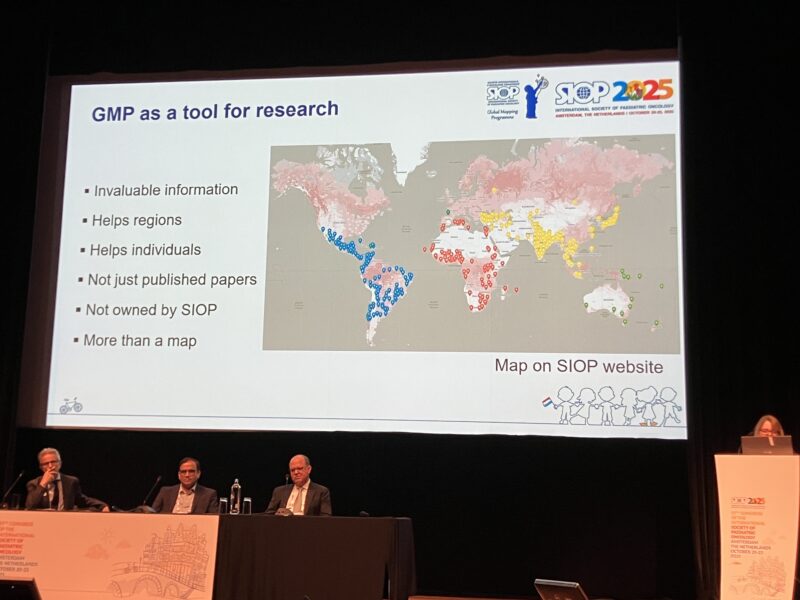
Dr Maite Gorostegui (GMP Chair) presenting at the President’s Lecture
You can read more about the GMP here and see the latest map here and read an article on OncoDaily
What do elephants have to do with global mapping?
Look out for another article about the SIOP Global Mapping programme coming shortly.
A picture says a thousand words
What actually does a tumour look like? When attending this type of conference, I avoid sessions that are likely to have pictures of sick children or children having surgery, operations, transplants etc. I also have a rule that if the title of the session has a word in it that I don’t understand, then I don’t attend that session as I won’t understand anything. Bear in mind I am a technical writer with a degree in English, not a nurse or doctor. I made an exception for a presentation on “Thoracospinal Tumours in Children”.
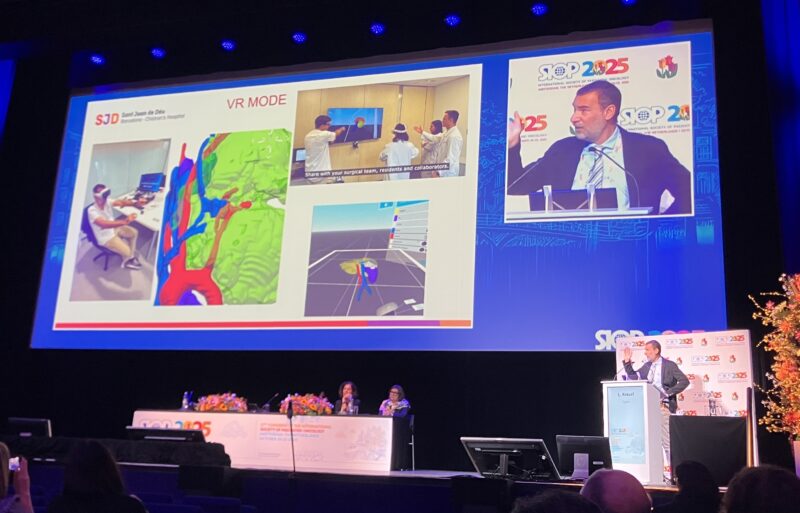
This talk was fascinating. Not only did we get to see what incredible work paediatric oncology surgeons do, but also there were computer generated images of tumours.
In this image you can see a neuroblastoma tumour and how it is growing in the chest area around the main thoracic vessels, the tumour needs to be shrunk by chemotherapy and/or removed by surgery.
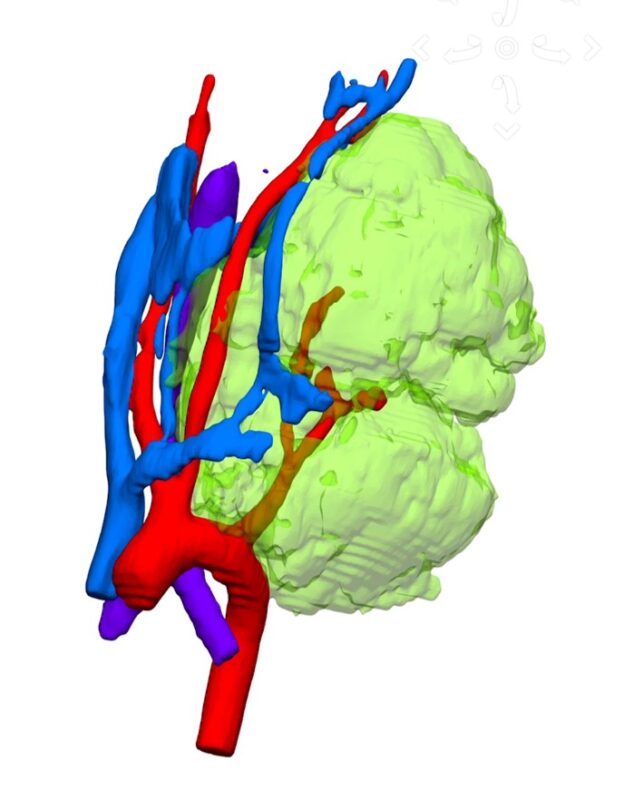
The course of action is agreed between the paediatric oncologist and surgeon.
Thank you, Dr Lucas Krauel for educating me. I am fortunate to have been introduced to him since the presentation
My highlights
These are just some of my highlights from the SIOP Congress:
- Discussing the future of the SIOP Global Health Network, and what I can do. Great to see lots of new faces attending.
- Giving an update on GMP to the SIOP Global Health Network.
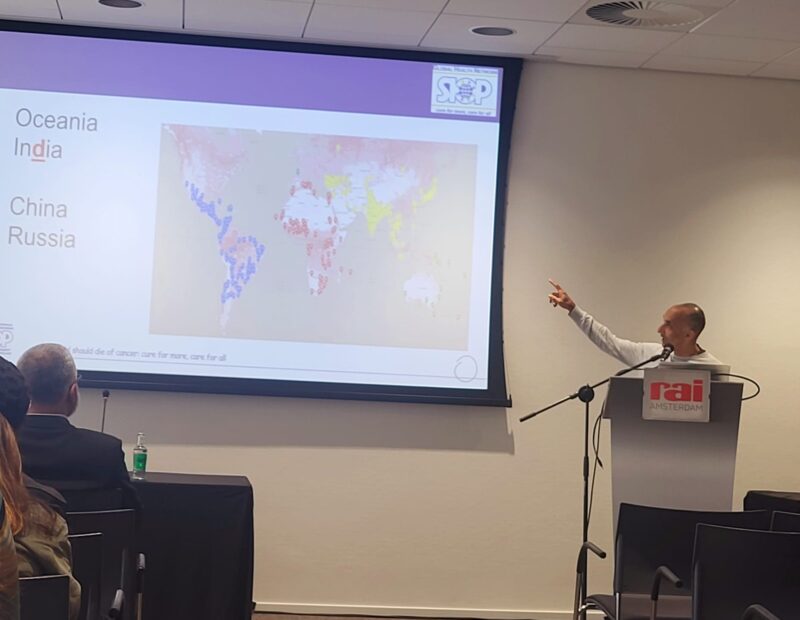
- Possibly setting up a working group to promote international tumour boards (watch this space)
There were many, many other productive conversations about mapping, rehabilitation, and clinical trials consortium in Africa (Ablate).
Who wants to get up at 6am to go for a run in a dark park?
That’s a great question. People often joke that fun and run are mutually exclusive. 200 of us joined the Fun(d) Run. It was very dark but there were lights and guides showing the route. Thank you Matt Murray from stopping me get lost. Donations from the registrations went to a children’s cancer charity in Romania. Thanks to all the runners who helped support this wonderful group. I bought myself a little treat for my effort.

Jet lagged in Amsterdam?
I travelled from London to Amsterdam:
“The straight-line (air) distance between London and Amsterdam is approximately 222 miles (357 kilometers).
Just one hour difference. I know how ridiculous this sounds, but due to me getting up at 3.30 am in the morning to travel, and poor diet, hot hotel, I slept very badly and felt exhausted and jet lagged for the whole week. Of course there isn’t jet lag when travelling from London to Amsterdam, it was down to my behaviour, this isn’t a hard luck story. It was a pleasure and a privilege to attend the SIOP Congress.
A thousand thank yous
This Congress saw the change of President. A huge thank you to Dr. Guillermo Chantada for his leadership, passion for helping and treating children with cancer all across the world, and support and active involvement with the SIOP GMP.
Thank you SIOP for hosting another fantastic congress, and a bigger thank you to all the attendees from over 134 countries who made the event so special.
Thank you to Julie Waxgeiser, Julia Challinor, Maite Gorostegui and Gavin Wells for helping me with this article, and Lucas Krauel for the image.
Written by Neil Ranasinghe
